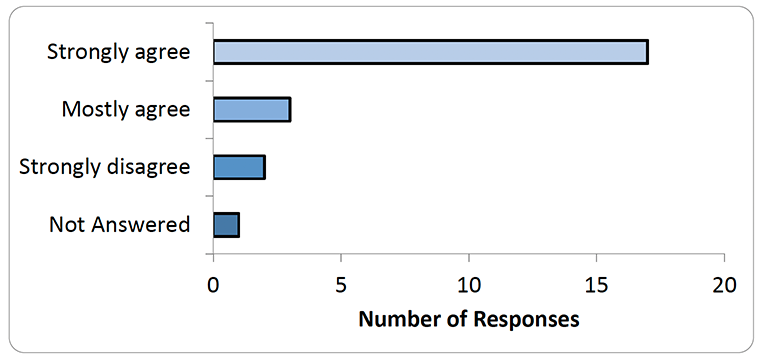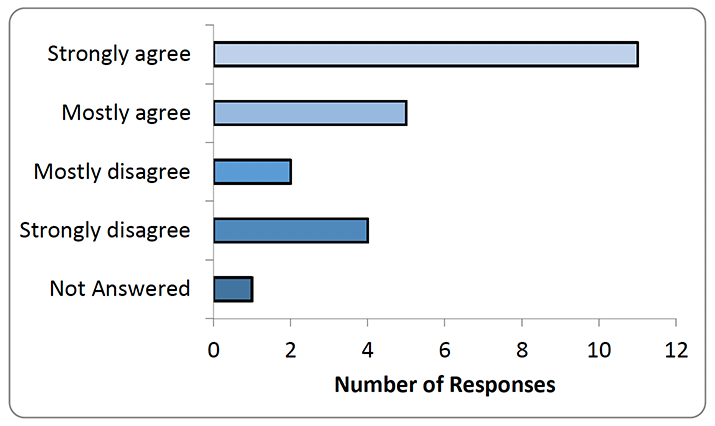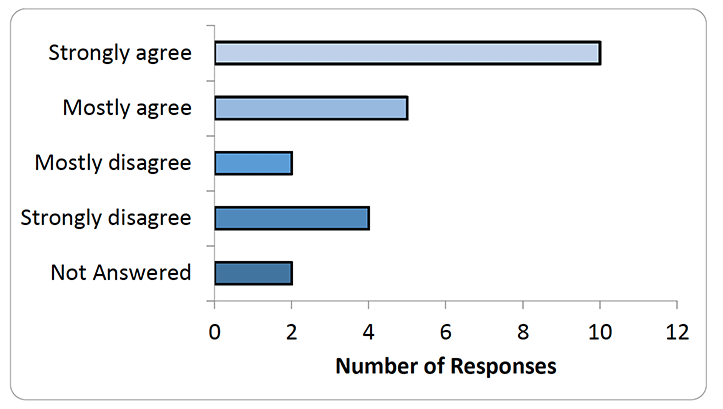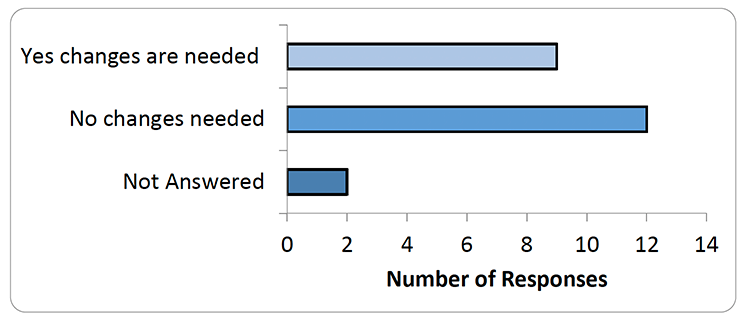Use of remote technology in school admission and exclusion appeal hearings: Consultation Analysis
This report provides a summary of the analysis of responses submitted during the consultation on whether to retain the option of holding school admission and exclusion appeal hearings remotely and whether all parties should agree on its use.
3. Analysis of Consultation Responses
3.1 Discussion on approach for quantitative data
The consultation included quantitative questions where the respondent was asked to select an answer from “Strongly Agree” “Mostly Agree” “Strongly disagree” and “Mostly disagree” or “Yes”, “No”, or “Not Sure”. The number of respondents in each category were counted and are presented in section 3.5. Where respondents did not provide an answer to a question a “no answer” category is also analysed.
3.2 Discussion on approach for qualitative data
A free text box was included alongside the quantitative questions to allow respondents to elaborate on their answer and provide qualitative information about their views on the proposals. Responses which included text as part of the respondents’ answer were analysed as follows.
Responses were initially reviewed to identify themes that presented across the body of responses. Responses were categorised for each question into groups according to the main themes that were present in each response. To ensure consistency across the body of responses, the themes identified were recorded in a coding framework. This document was updated as the analysis progressed. The coding framework recorded themes that arose from the body of responses, and these were further reviewed to identify key themes which encompassed groups of themes.
3.3 Limitations of this methodological approach
It is also important to acknowledge that this approach has limitations. Firstly, the coding framework was developed from the themes identified within responses received and was formulated prior to the analysis of responses. Secondly, the questions posed in the consultation document can be argued to have placed boundaries on the responses provided and to have potentially limited their breadth and focus. Finally, it is not possible to guarantee that the analysis will be free of bias. The information provided by respondents will reflect their interests and perspectives. Similarly, the views of those analysing the data will also be present and be reflected in the interpretation of the data and use of the coding framework. However, this approach allows us to identify areas of consensus, disagreement and debate within consultation responses and for them to be explored in greater depth than would be possible with data gathered solely from quantitative questions.
As noted by Cresswell (2013), care should be taken when using a coding framework that attributes numerical values to qualitative data[4]. As a result, we do not set out the number of responses that highlighted the identified theme. We also acknowledge that the analysis is based on information provided by those who responded to the consultation which will not be representative of the wider population and, as noted above, will reflect the views and interests of those individuals and organisations that chose to respond to the consultation.
3.4 Consultation Responses
In total, 23 respondents provided responses for the consultation, 20 through the Citizen Space platform and 3 by email.
| Category of Respondent | Number | Percentage |
|---|---|---|
| Individual | 6 | 26% |
| Organisations representing Local Authority Interests | 14 | 61% |
| Other organisations (representing various stakeholder bodies including those from for example the judiciary and legal profession, advocacy groups for children with additional support needs) | 3 | 13% |
3.5 Quantitative Analysis
This section provides quantitative analysis of the questions in the consultation.
Question 1: Do you agree with the proposal that the use of remote means for appeal hearings should remain?
23 consultees responded to this question and the majority (87%) agreed that the use of remote means for appeal hearings should remain:

| Option | Total | Percent |
|---|---|---|
| Strongly agree | 17 | 74% |
| Mostly agree | 3 | 13% |
| Mostly disagree | 0 | 0% |
| Strongly disagree | 2 | 9% |
| Not Answered | 1 | 4% |
Question 2: Do you agree that video conferencing should be the default option and telephone conferencing, or wholly written means be used only where it is not possible to use video-conferencing?
23 consultees responded to this question, 70% of those respondents (16 responses) agreed that video conferencing should be the default option and telephone conferencing, or wholly written means be used only where it is not possible to use video-conferencing.

| Option | Total | Percent |
|---|---|---|
| Strongly agree | 11 | 48% |
| Mostly agree | 5 | 22% |
| Mostly disagree | 2 | 9% |
| Strongly disagree | 4 | 17% |
| Not Answered | 1 | 4% |
Question 3: do you agree that remote means should only be used where all parties agree?
A total of 23 responses with the largest proportion, 15 (65%), responding that they agree that remote means should only be used where all parties agree

| Option | Total | Percent |
|---|---|---|
| Strongly agree | 10 | 43% |
| Mostly agree | 5 | 22% |
| Mostly disagree | 2 | 9% |
| Strongly disagree | 4 | 17% |
| Not Answered | 2 | 9% |
Question 4: Are there any other improvements that should be made to how remote means is used in appeal hearings, for example, to mitigate the risk of digital exclusion?
A total of 23 responses with the largest proportion, 12 (52%), responding that they did not think any changes were needed

3.6 Key Findings
A total of 23 responses were received. Responses varied greatly in length. Some responses were brief and gave less explanation of the rationale of their response. Reponses from organisations focussed on the areas of the consultation most relevant to their organisation’s interests and submitted no answers to some of the questions.
Question 1 asked do you agree with the proposal that the use of remote means for appeal hearings should remain? 70% of respondents (16 responses) agreed that appeal hearings should maintain the use of remote technology.
Question 2 asked do you agree that video conferencing should be the default option and telephone conferencing, or wholly written means be used only where it is not possible to use video-conferencing? The majority, 70% respondents (16 responses) were in favour with 26% of respondents (six responses) against.
Question 3 asked do you agree that remote means should only be used where all parties agree? Around a two thirds, 65% of respondents (15 responses) agreed that remote means should only be used where all parties agree and under one third, 26% responded (6 responses) that they disagreed with the proposal.
Question 4 asked are there any other improvements that should be made to how remote means is used in appeal hearings for example to mitigate the risk of digital exclusion? The majority, 52% of respondents (12 responses) did not think any changes were needed and 39% of respondents (9 responses) thought there should be changes.
Contact
Email: Emma.davidson@gov.scot
There is a problem
Thanks for your feedback